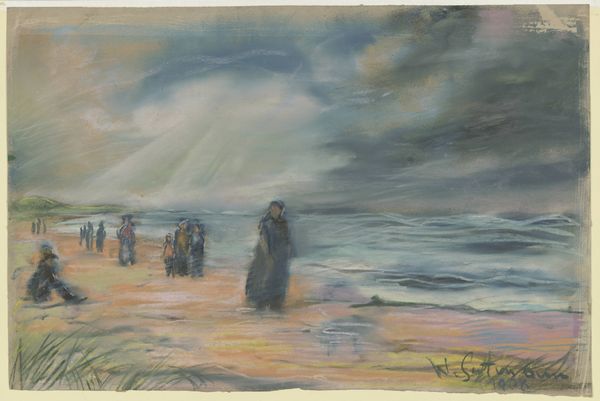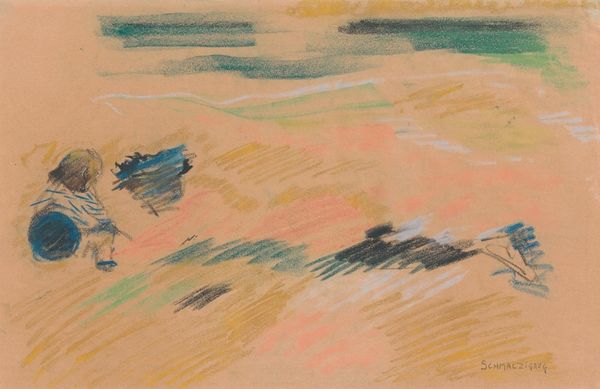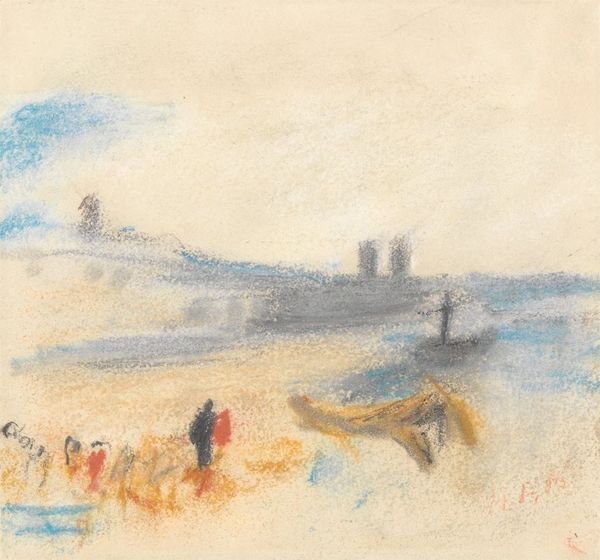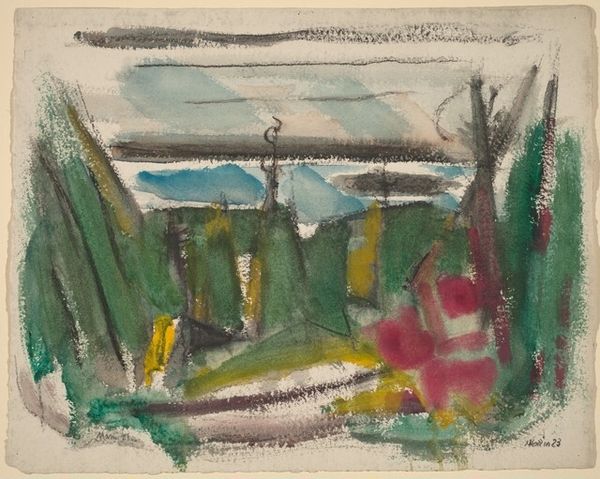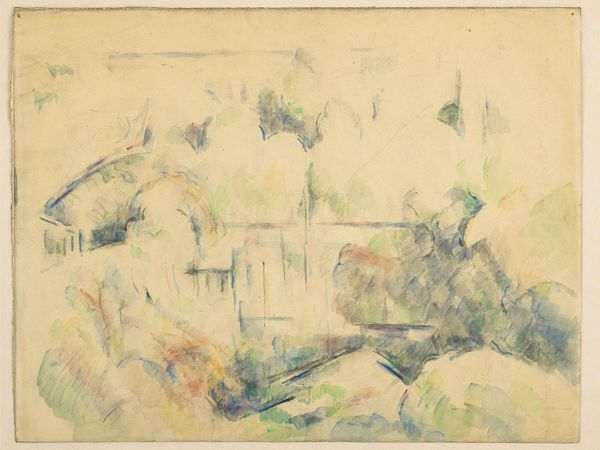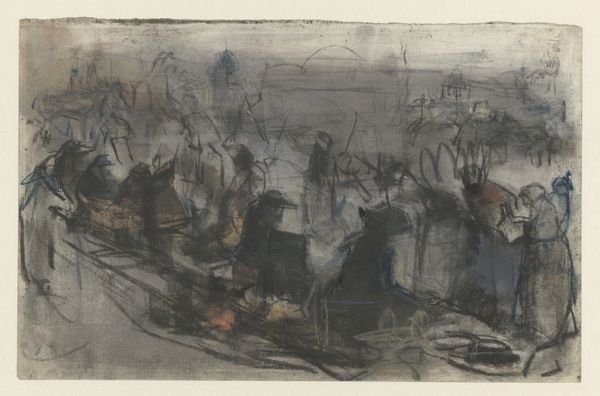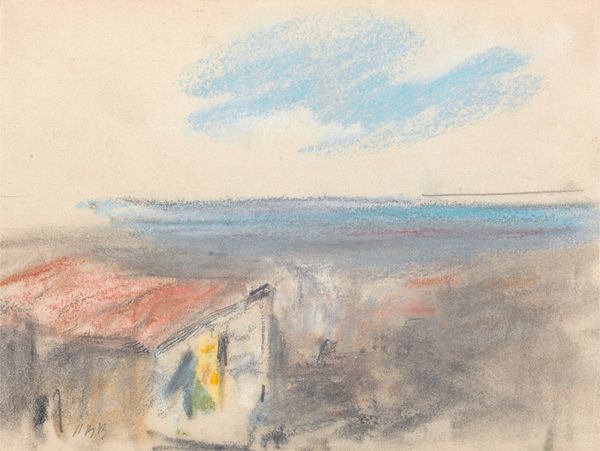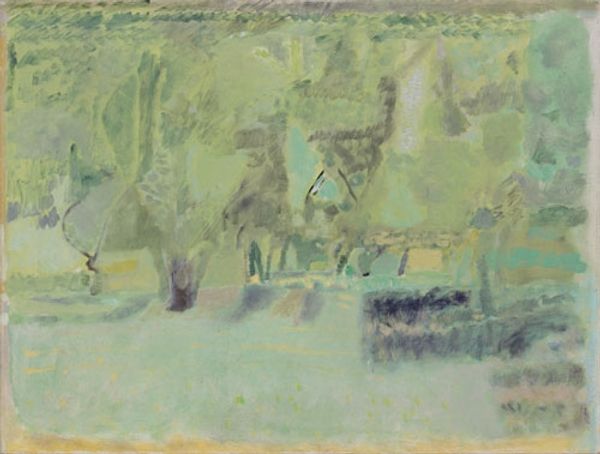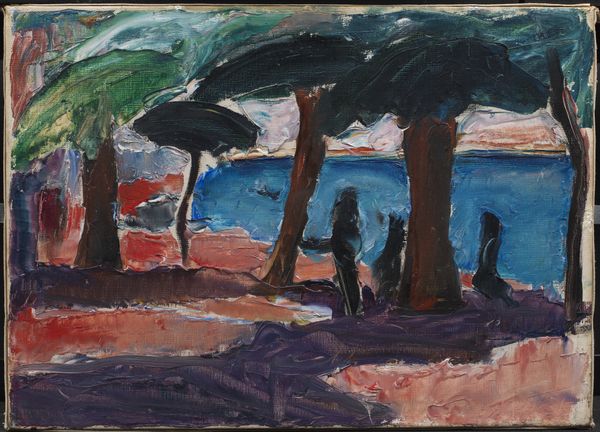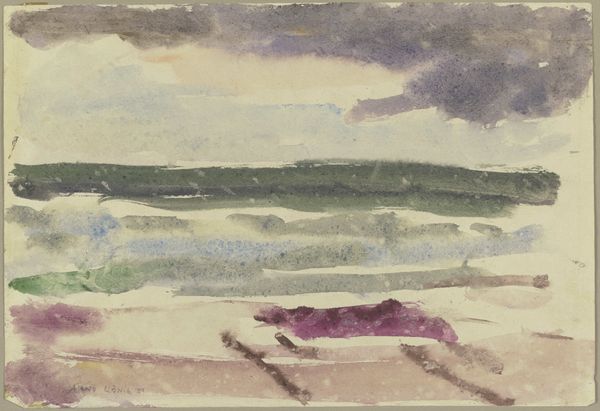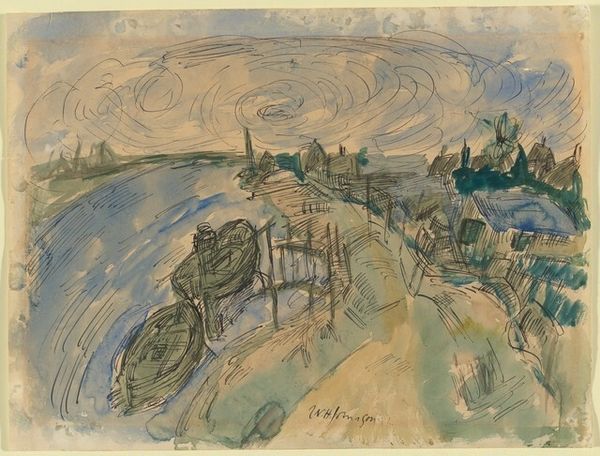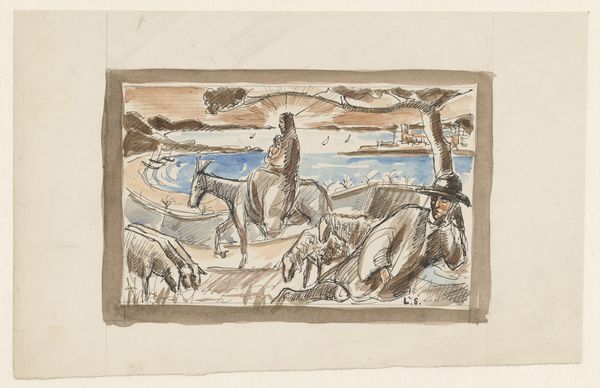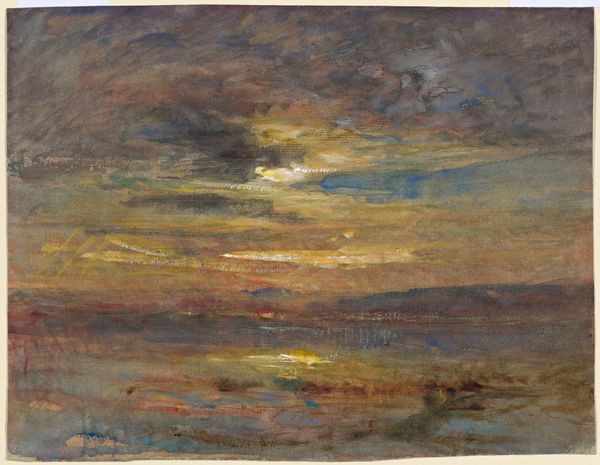
Copyright: Public Domain
Curator: This is Wilhelm Gutmann's "Beach in Katwijk," a drawing rendered in pastel and pencil on paper, dating from 1908. It's currently held at the Städel Museum. Editor: The pale blues and browns immediately give me a melancholic feel. There's something very desolate about the wide-open space and the figures huddled along the beach. Curator: Katwijk, a coastal town in the Netherlands, was a popular destination for artists at the time. Gutmann's choice to depict this scene is quite typical for artists interested in capturing modern leisure activities. What is compelling, though, is its somewhat muted palette. Editor: Absolutely. Given the period, one might expect brighter colors. The softness lends a sense of impermanence, almost like a faded photograph. One has to wonder about the story here. Are these figures seeking refuge, or simply seeking recreation along this vast shore? Is this escapism, or isolation? Curator: Good point! These are crucial questions, especially considering that the social dynamic was undergoing many changes during that period. Tourism was just being democratized, and how it related to class and identity could have a lot of impact for coastal villages like Katwijk. Also, there is an almost anonymous character that makes a scene like that interesting to me. You do not see who is there exactly or what they are doing. This is a nice visual reference for a social environment in Europe. Editor: And those beach huts lined up, almost regimented. There's a tension between the natural expanse of the sea and the controlled environment of the beach structures. It suggests the attempt to domesticate the wild. Curator: Gutmann's piece captures the transitional mood so well. What I find quite intriguing is how Gutmann’s impressionistic style lends itself to questioning the established art, thus raising critical perspectives on reality and social conditions during that era. Editor: Yes! "Beach in Katwijk" asks us to reconsider the historical narrative, allowing a more inclusive vision that emphasizes our shared human experience, then and now. Curator: It serves as a fantastic window into the past, revealing not just a specific place, but a particular moment in history where modernity meets the shore.
Comments
No comments
Be the first to comment and join the conversation on the ultimate creative platform.
